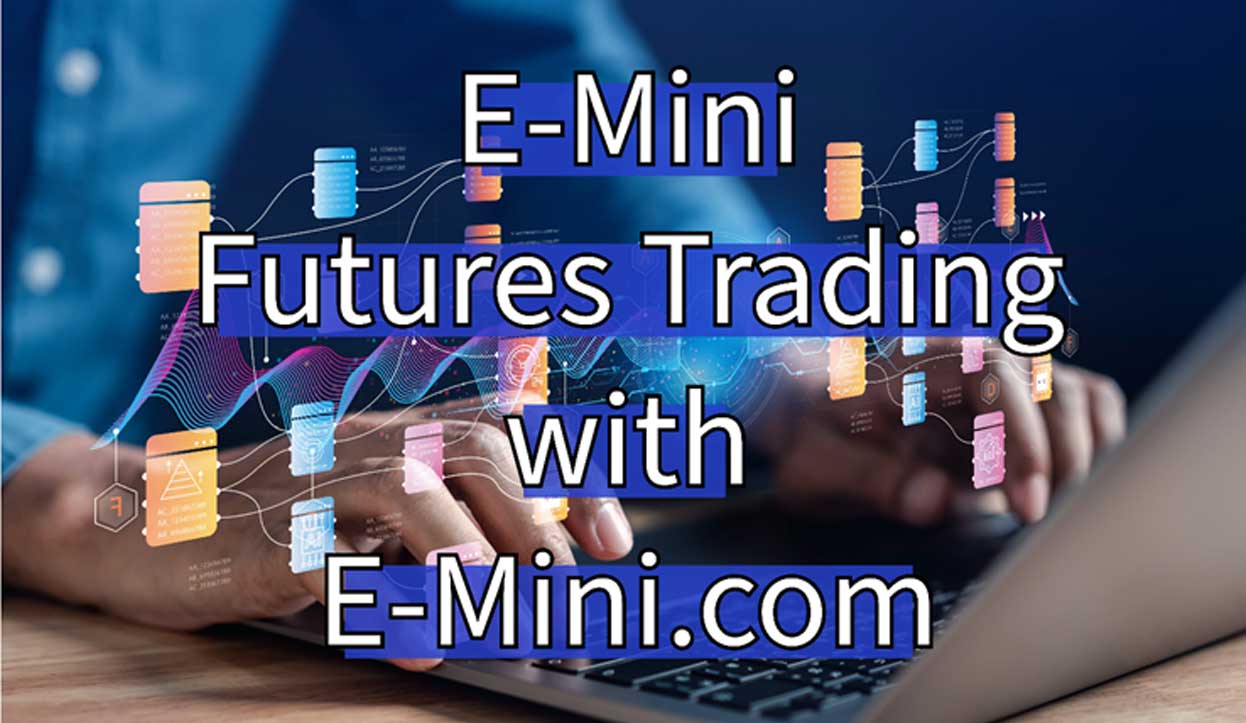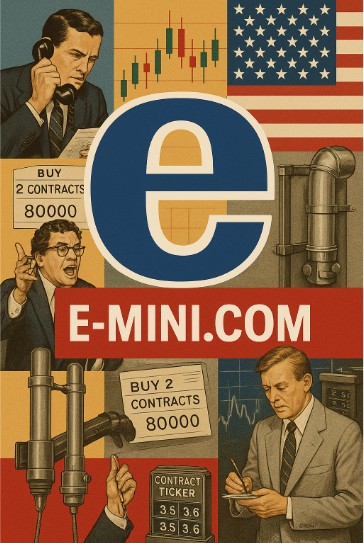E-Mini futures have revolutionized the world of futures trading, offering a versatile and accessible way for traders to engage with the markets. Whether you’re a seasoned professional or a novice investor, E-Mini futures provide unique opportunities to diversify portfolios, hedge risks, and capitalize on market movements. In this feature article, we’ll delve into the essentials of E-Mini futures trading, exploring their benefits, strategies, and the nuances that make them an attractive option for traders.
E-Mini futures are electronically traded futures contracts that represent a fraction of the value of standard futures contracts. Introduced by the Chicago Mercantile Exchange (CME) in 1997, these contracts were designed to make futures trading more accessible to individual investors and smaller institutions. The “E” in E-Mini stands for “electronic,” highlighting their digital nature, while “Mini” indicates their smaller contract size compared to traditional futures.
Types of E-Mini Futures
E-Mini futures cover a range of market indices, commodities, and currencies. Some of the most popular E-Mini futures include:
- S&P 500 E-Mini Futures (ES): Tracks the S&P 500 index, providing exposure to 500 of the largest U.S. companies.
- Nasdaq-100 E-Mini Futures (NQ): Follows the Nasdaq-100 index, which includes 100 major non-financial companies listed on the Nasdaq stock exchange.
- Dow Jones E-Mini Futures (YM): Represents the Dow Jones Industrial Average, comprising 30 significant U.S. companies.
- Russell 2000 E-Mini Futures (RTY): Tracks the Russell 2000 index, focusing on small-cap stocks.
Additionally, the introduction of E-Micro futures has further democratized futures trading. E-Micro futures are even smaller contracts, allowing traders to enter the market with lower capital and reduced risk.
The Mechanics of Futures Trading
How Futures Contracts Work
Futures contracts are agreements to buy or sell an asset at a predetermined price on a specific future date. These contracts are standardized, specifying the quantity, quality, and delivery terms of the underlying asset. In the case of E-Mini futures, the underlying assets are market indices.
Leverage and Margin
One of the key features of futures trading is leverage, which allows traders to control large positions with a relatively small amount of capital. This is made possible through margin requirements, which are the funds required to open and maintain a futures position. While leverage can amplify gains, it also increases the potential for significant losses, making effective risk management essential.
Benefits of Trading E-Mini Futures
Accessibility
E-Mini futures are accessible to a wide range of traders due to their smaller contract sizes and lower margin requirements compared to standard futures. This makes them an ideal entry point for individual investors and smaller institutions.
Liquidity
E-Mini futures are among the most liquid trading instruments, with high trading volumes and tight bid-ask spreads. This liquidity ensures that traders can enter and exit positions quickly and efficiently, minimizing the impact of market fluctuations.
Flexibility
E-Mini futures offer flexibility in trading strategies, accommodating various approaches such as day trading, swing trading, and long-term investing. They also provide opportunities for hedging and diversification within a portfolio.
Who Trades E-Mini Futures?

E-Mini futures have become a popular trading instrument since their introduction in 1997, attracting a diverse group of participants. These include institutions, corporations, individual speculators, hedgers, and more. Each group has distinct objectives and strategies, contributing to the dynamic nature of the E-Mini futures market. Let’s explore who trades E-Mini futures and why they are drawn to this versatile financial instrument.
Institutional Traders
Institutional traders, such as hedge funds, mutual funds, and proprietary trading firms, are among the largest participants in the E-Mini futures market. These entities manage substantial amounts of capital and seek to leverage the liquidity and efficiency of E-Mini futures to achieve their investment goals.
- Hedge Funds: Hedge funds often use E-Mini futures to implement sophisticated trading strategies, including long/short positions, arbitrage, and high-frequency trading. The high liquidity and tight spreads of E-Mini contracts make them ideal for these strategies, allowing hedge funds to execute large trades with minimal market impact.
- Mutual Funds: Mutual funds may use E-Mini futures for hedging purposes or to gain exposure to specific market indices without holding the underlying assets. This flexibility helps mutual funds manage risk and maintain their desired asset allocation.
- Proprietary Trading Firms: These firms use their own capital to trade E-Mini futures, often employing algorithmic and quantitative strategies. The speed and efficiency of electronic trading platforms enable proprietary traders to capitalize on small price movements, making E-Mini futures an attractive choice.
Corporate Entities
Corporations also participate in the E-Mini futures market, primarily for hedging purposes. By using futures contracts, companies can mitigate the risk of adverse price movements in their core businesses.
- Corporate Hedging: Companies with significant exposure to market indices—such as those with large pension funds or stock-based compensation plans—use E-Mini futures to hedge against market volatility. This allows them to stabilize their financial performance and protect their investments.
- Treasury Management: Corporate treasurers might use E-Mini futures to manage the company’s cash flows and investment portfolios. By locking in prices or protecting against unfavorable market movements, they can ensure more predictable financial outcomes.
Individual Speculators
Individual traders and retail investors are significant participants in the E-Mini futures market. The accessibility, lower margin requirements, and smaller contract sizes of E-Mini futures make them attractive to a wide range of individual traders.
- Day Traders: Day traders are active participants who seek to profit from short-term price movements. They leverage the high liquidity and volatility of E-Mini futures to enter and exit trades quickly, often using technical analysis and automated trading systems to guide their decisions.
- Swing Traders: Swing traders look to capture price swings over several days or weeks. E-Mini futures provide them with the flexibility to hold positions for longer periods while still benefiting from leverage and margin efficiency.
- Long-term Investors: Some individual investors use E-Mini futures to gain exposure to market indices as part of a diversified portfolio. By incorporating E-Mini contracts, they can achieve broad market exposure without the need to directly purchase a basket of stocks.
Hedgers
Hedgers use E-Mini futures to protect against adverse price movements in their investments or business operations. This group includes both institutional and individual participants who seek to reduce risk and ensure more predictable financial outcomes.
- Portfolio Managers: Managers of large investment portfolios use E-Mini futures to hedge against market downturns. By shorting E-Mini contracts, they can offset potential losses in their equity holdings, providing a safety net in volatile markets.
- Commodity Producers: Producers of commodities like oil, agriculture, or metals may use E-Mini futures to hedge against price fluctuations in related indices. For instance, an agricultural producer might use E-Mini futures tied to the S&P 500 to hedge against broader market risks that could impact commodity prices indirectly.
- Retail Hedgers: Individual investors who hold significant positions in stocks or ETFs might use E-Mini futures to hedge their portfolios. This allows them to protect their investments from market corrections while maintaining their long-term positions.
Arbitrageurs
Arbitrageurs exploit price discrepancies between related markets to make risk-free profits. E-Mini futures, with their tight spreads and high liquidity, are ideal instruments for various arbitrage strategies.
- Index Arbitrage: Traders use index arbitrage to capitalize on price differences between the E-Mini futures and the underlying index. By simultaneously buying and selling the futures contract and the index components, they can lock in risk-free gains.
- Intermarket Arbitrage: This strategy involves taking advantage of price discrepancies between different futures markets. For example, an arbitrageur might trade E-Mini S&P 500 futures against E-Mini Nasdaq-100 futures when their relative prices diverge.
The E-Mini futures market is a vibrant ecosystem comprising a diverse array of participants, each with unique motivations and strategies. From institutional traders and corporations to individual speculators and hedgers, the appeal of E-Mini futures lies in their accessibility, liquidity, and versatility. Understanding the roles and objectives of these various participants can provide valuable insights into the dynamics of the E-Mini futures market and the opportunities it presents for traders at all levels.
Trading Strategies for E-Mini Futures
Day Trading
Day trading E-Mini futures involves making multiple trades within a single trading day to capitalize on intraday price movements. Strategies such as scalping, momentum trading, and breakout trading are commonly used by day traders.
Swing Trading
Swing trading aims to capture price swings over several days or weeks. Traders use technical analysis to identify trends and reversals, employing strategies like trend following and range trading.
Advanced Strategies
More advanced traders may use spread trading, which involves taking opposite positions in two related futures contracts to profit from the spread between them. Algorithmic trading and the use of options with E-Mini futures are also popular among experienced traders.
Risk Management and Trading Psychology
Effective risk management is crucial in E-Mini futures trading. Techniques such as setting stop-loss orders, determining appropriate position sizes, and diversifying trades help mitigate potential losses. Equally important is maintaining emotional discipline and developing a winning mindset to navigate the psychological challenges of trading.
Tools and Resources
Traders can enhance their performance by using advanced trading platforms, charting software, and backtesting tools. Additionally, educational resources such as books, online courses, and trading communities provide valuable knowledge and support for continuous improvement.
E-Mini futures offer a compelling way to engage with the futures markets, combining accessibility, liquidity, and flexibility. By understanding the mechanics, benefits, and strategies of E-Mini futures trading, traders can unlock their potential and achieve their financial goals. As the trading landscape continues to evolve, E-Mini futures remain a powerful tool for navigating the complexities of the market.
Ready to start trading futures? Call US 1(800)454-9572 – Int’l (310)859-9572 email info@e-mini.com and speak to one of our experienced, Series-3 licensed futures brokers and start your futures trading journey with E-Mini.com today.
Disclaimer – Trading Futures, Options on Futures, and retail off-exchange foreign currency transactions involves substantial risk of loss and is not suitable for all investors. Past performance is not indicative of future results. You should carefully consider whether trading is suitable for you in light of your circumstances, knowledge, and financial resources. You may lose all or more of your initial investment. Opinions, market data, and recommendations are subject to change at any time.
Important: Trading commodity futures and options involves a substantial risk of loss. The recommendations contained in this writing are of opinion only and do not guarantee any profits. This writing is for educational purposes. Past performances are not necessarily indicative of future results.
**This article has been generated with the help of AI Technology. It has been modified from the original draft for accuracy and compliance.
***@cannontrading on all socials.




